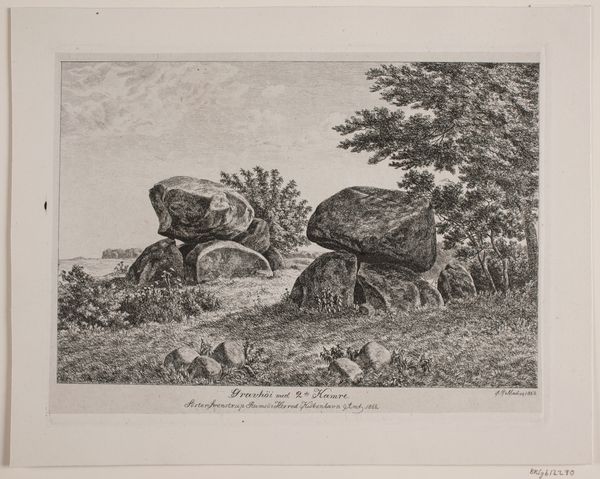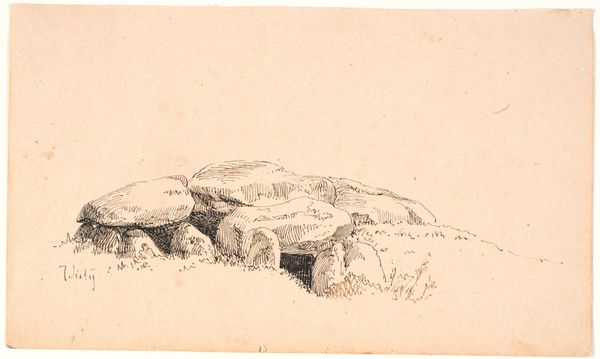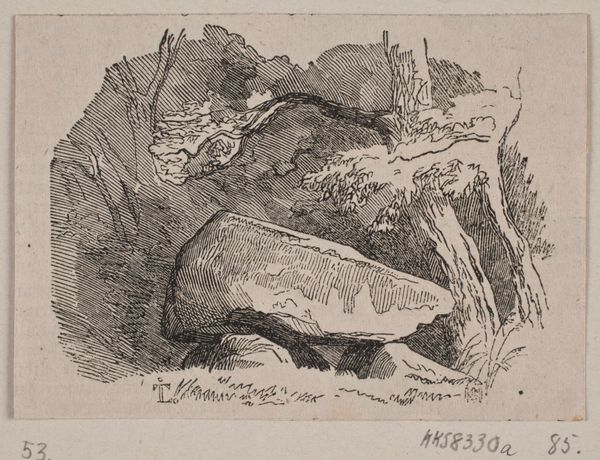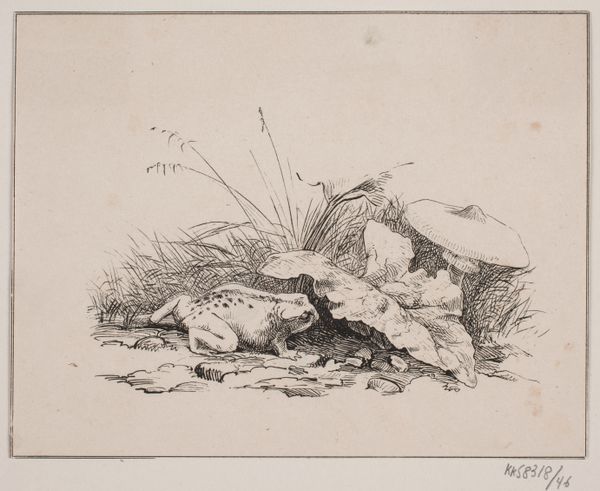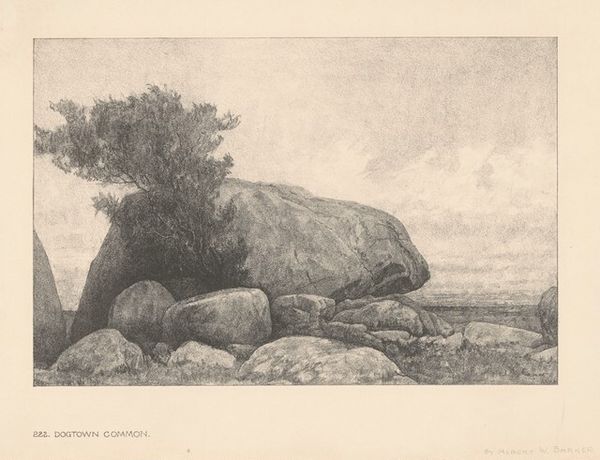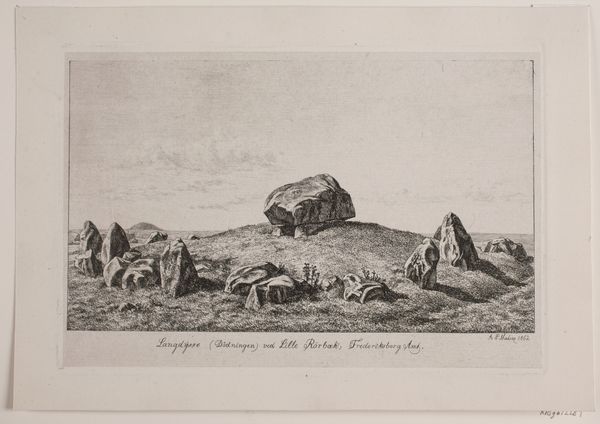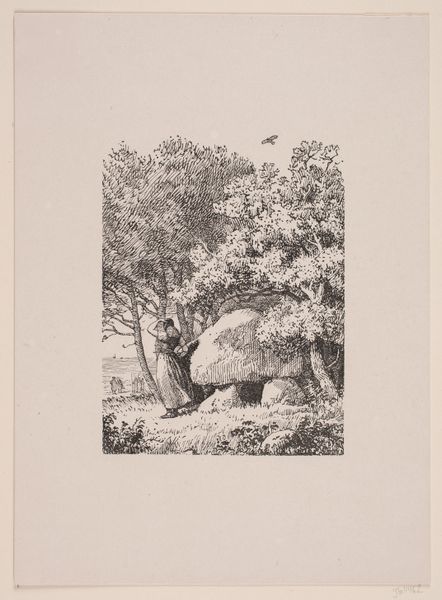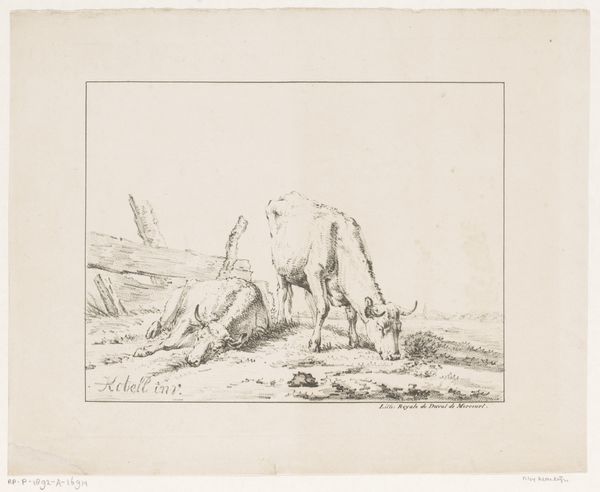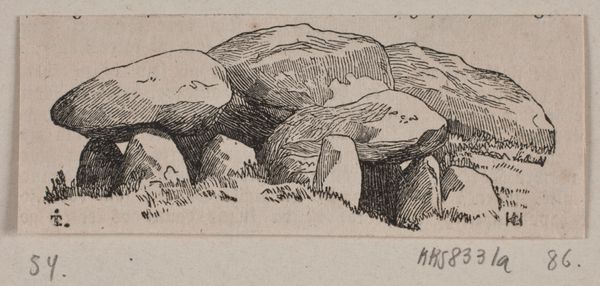
lithograph, print
#
lithograph
# print
#
landscape
#
realism
Dimensions: 97 mm (height) x 126 mm (width) (bladmaal)
Editor: Here we have Adolph Kittendorff's "Lammene," a lithograph from 1845 depicting sheep huddled under a dolmen. I'm immediately struck by the contrast between the rough, natural texture of the stone and the soft wool of the animals. What can you tell us about this work? Curator: I'm drawn to the interplay between nature and culture inherent in this piece. Lithography itself is a process dependent on readily available materials - stone, grease, water. Kittendorff is employing industrial means, however rudimentary, to depict an ancient, pre-industrial landscape radically altered through human interventions. Editor: Altered how? I see sheep taking shelter... Curator: Exactly. Consider the transformation of that landscape into pasture through deforestation and cultivation. What was the social function of the dolmen? Was it a communal marker, a site for ritual? Now, it is just shelter, a ruin repurposed by livestock which themselves exist to serve human needs. Editor: So you're saying the choice of lithography as a medium enhances the message about the relationship between humans, labor and land? Curator: Precisely! The act of making this image and the image itself invite reflection on systems of production, ownership, and consumption that underpin 19th century Danish society. The stark contrast is quite striking! Editor: It makes me think differently about landscape art in general, moving beyond just appreciating surface appearances and focusing on the complex relationship of labour! Curator: Exactly, we're interrogating whose labor is seen, and whose is erased in our depictions of landscape! I am hopeful you now appreciate it with fresh perspective! Editor: Definitely, a really thought-provoking take on landscape and the art-making process!
Comments
No comments
Be the first to comment and join the conversation on the ultimate creative platform.

